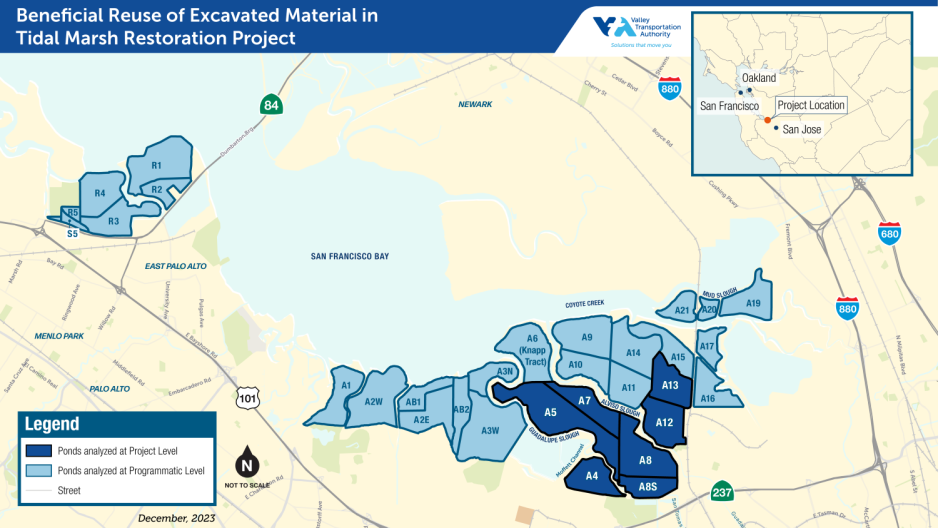VTA was awarded a $2,982,471 grant from the State of California Wildlife Conservation Board for the beneficial reuse of excavated material in Tidal Marsh Restoration Project.
The Beneficial Reuse Project (Project) includes the transportation and depositing of excavated material primarily from VTA’s BART Silicon Valley Extension Phase II Project (BSVII Project) to the South San Francisco Bay former salt production ponds. The excavated material will be placed in select ponds within the Don Edwards San Francisco Bay National Wildlife Refuge for the purpose of raising the subsided ponds bottoms to accelerate the timeline for ultimate tidal marsh restoration. Combined, the beneficial reuse and tidal marsh restoration projects will bring numerous local environmental benefits including:
- Sea level rise resilience
- Greenhouse gas emissions reductions
- Habitat creation for threatened and endangered species
- Water quality improvements
- Flood risk management
- Construction waste reuse
The grant award is for the design phase of the Project to identify methodologies for transport and placement of the material into the ponds. The Project is a collaborative project between VTA, U.S. Fish and Wildlife Service, and Valley Water. The Project was previously awarded a $1,500,000 grant from the California State Coastal Conservatory for the environmental and permitting phases of the Project.
It is estimated that over 3 million cubic yards of material will be excavated from the tunnel boring for VTA’s BSVII Project. VTA’s primary choice for reuse of the excavated materials is for restoring the salt ponds versus disposing of the soils in landfills. This effort also supports the Project’s proactive sustainability goals.
Upon completion, VTA’s BSVII Project will offer an alternative to vehicular dependency, provide equitable transit for low-income communities, help alleviate traffic congestion, and reduce greenhouse gas emissions. Additionally, the BSVII Project is expected to spur approximately 75,000 jobs, including almost 43,000 jobs directly related to the project, and another 32,000 jobs tied indirectly or through the investment from the project.
The four future stations in Santa Clara and San José will serve approximately 54,600 average weekday riders by 2040, with a projected 27,900 daily ridership at the Downtown San José Station alone. The two stations adjacent to San José State and Santa Clara Universities are projected to serve over 5,600 university student trips per day, not including trips taken by staff and faculty. Once VTA's BSVII is completed, nearly 50% of trips to and from the four new stations—a total of 32,900 by 2040—will be non-work-related trips.

